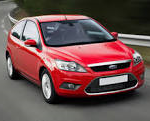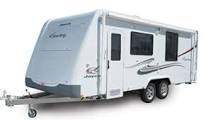On Friday 13 February a car caught fire outside our hall. The quick actions of kindergarten staff, and the fact that we have extinguishers on site that are maintained and checked regularly meant that the fire was contained and extinguished before it got out of control. 
Safety is important and being ready for an emergency is something that everyone should think about. So we went to the NZ Fire Service website and have copied the following information for your knowledge (http://www.fire.org.nz/Fire-Safety/Safety-Devices/Pages/Fire-extingushers.html).
Fire extinguisher use
It is only safe to try and use fire extinguishers when:
- everyone has been evacuated and accounted for at a safe meeting place
- the fire service has been called
- it is safe to do so considering the size and location of the fire
- you can safely access and retreat from the fire.
Remember life is more important than property — don’t put yourself or others at risk.
What type of extinguisher do I need
There are 6 classes of fire (before 1999 there were only 4 classes of fire so extinguishers may still be labelled with the old 4-class fire classification):
- Class A (Wood paper plastics)
- Class B (Flammable & combustible liquids)
- Class C (Flammable gases)
- Class D (Fires involving combustible metals)
- Class E (Electrically energised equipment)
- Class F (Cooking oils and fats)
and there are many different types of fire extinguishers:
- Water
- Foam
- Wet chemical
- Dry powder
- Carbon dioxide
- Vaporising liquid
- Specialised materials for Class D.
The type of fire extinguisher you need will depend on the class of fire you are most likely to experience. For example where you may experience a cooking oil fire you will need a wet chemical fire extinguisher rather than a water extinguisher.
Halon Extinguishers
Under the Ozone Layer Protection Act 1996, it is illegal to use or maintain Halon extinguishers.
Where should I install the fire extinguisher?
- Mount fire extinguishers on a wall out of the normal reach of children.
- Place fire extinguishers in noticeable places where they can be accessed safely. Suggestions include:
- In or near the kitchen – not too close to the stove or cooking surfaces.
- Ideally have an extinguisher in the garage and one in the car.
- Caravans should have one attached to the inside of the door.
- Boats should have one mounted in a protected area where it can be reached from the open deck.
Operating the extinguisher
When operating a fire extinguisher remember PASS:
- Pull the safety pin or remove the clip.
- Aim the nozzle at the base of the fire from a safe distance. Most extinguishers are designed to be operated from about 2 – 3 metres away.
- Squeeze the handles.
- Sweep the extinguisher from side to side while aiming at the base of the fire.
Which fire extinguisher is best for my home, garage, car, boat, or caravan?
House
Best choice of fire extinguisher
Wet Chemical and ABE Dry Powder (NZS 4503)
Minimum rating 1A:E. Preferred rating 1A:E:IF.Alternative choice of fire extinguisher
ABE Dry Powder and Fire Blanket
Considerations
- A cooking oil or fat fire in the kitchen is the most likely type of fire to occur in your home. So your first choice of an extinguisher should be able to extinguish cooking oil and fat fires.
- While an ABE Dry Powder extinguisher is suitable for other types of fire in your home NEVER use it on a cooking oil or fat fire.
- A Wet Chemical extinguisher is best for extinguishing cooking oil and fat fires and can also be used on most other classes of fire in the home. Don’t use wet chemical extinguishers on fires with a live electrical source.
- Protect your home against the widest range of fire hazards with both an ABE Dry Powder extinguisher and a Wet Chemical extinguisher.
- You can also use a fire blanket as an alternative to a wet chemical extinguisher for cooking oil and fat fires.
- The wet chemical extinguisher or fire blanket should be positioned close to the kitchen, on an escape route to the outside.
- As electricity may pose a significant secondary hazard, ensure power is isolated before extinguishing a stove-top fire.
Garage
Best choice of fire extinguisher
ABE Dry Powder (NZS 4503)
Minimum rating 2A:20B:E. Preferred rating 2A:40B:EAlternative choice of fire extinguisher
Foam
Considerations
- Unwanted fires in a garage or shed will most likely be influenced by your hobbies and activities carried out in there.
- Flammable liquid fires present a major concern if you have fuels, paints and solvents in your garage or shed.
Car
Best choice of fire extinguisher
ABE Dry Powder
Alternative choice of fire extinguisher
Foam
Considerations
- Fires in cars most often happen because of a collision, repairs to bodywork using welding equipment, or electrical faults.
- The presence of flammable fuels is the major concern.
- Electrical equipment is not usually of concern due to the low voltage used in cars.
- An extinguisher should be securely fastened, preferably in the boot space, to avoid the risk of injury in the event of a collision.
Boat
Best choice of fire extinguisher
Wet Chemical and ABE Dry Powder
Alternative choice of fire extinguisher
ABE Dry Powder and Fire Blanket
FoamConsiderations
- Boat fires are also likely to involve flammable liquids or result from a gas explosion from leaking LPG or CNG.
- Wet Chemical extinguishers, good for cooking oil or fat fires, are not suitable for use on liquid fuel fires.
- Foam extinguishers, good for flammable liquids, will have limited effect on cooking oil and fat fires.
- The electrical supply on the boat will need to be considered if a 230-volt system is used. Wet chemical and foam extinguishers are not suitable for use on live electrical sources.
Caravan
Best choice of fire extinguisher
Wet chemical and ABE Dry Powder
Alternative choice of fire extinguisher
ABE Dry Powder and Fire Blanket
Considerations
- A cooking oil or fat fire in the kitchen is the most likely type of fire to occur in your caravan. So your first choice of an extinguisher should be able to extinguish cooking oil and fat fires and should be positioned close to the escape route to the outside.



